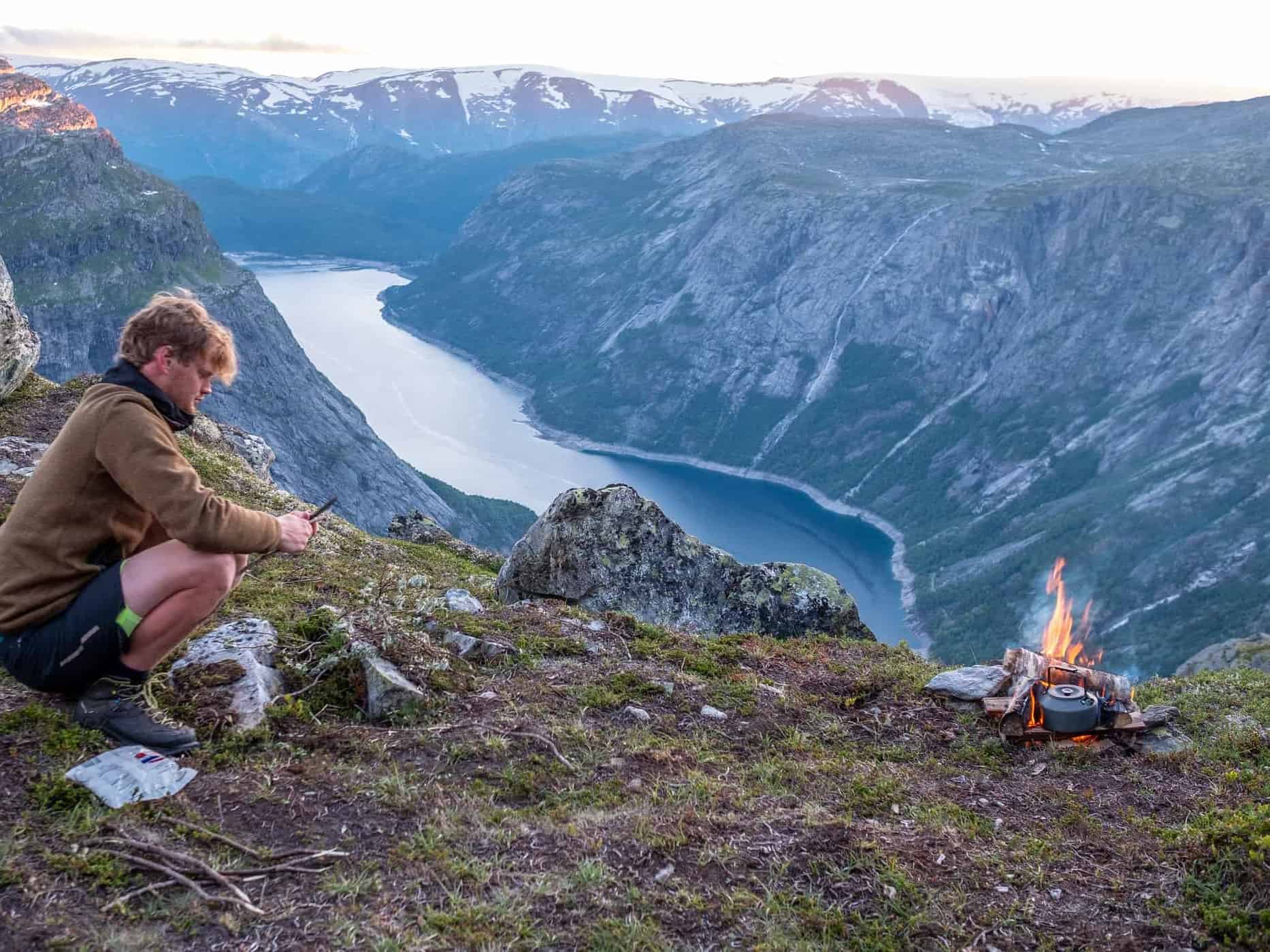Even if you can’t find readily available dry wood, not all is lost. You can still dry wood, but you’ll have to work for it.
Hopefully, you remembered to pack a knife, foldable saw, or hatchet.
Wood doesn’t absorb water like a sponge, so even if the outside is wet, the inside will still be dry.
In fact, cut away the outer pieces of your wood to expose the dry stuff in the middle. Then, collect as much tinder and kindling as possible.
Additionally, if it’s still raining, you’ll have to figure out a way to keep it dry while you continue working. Plus, understand that you need substantially more wood for wet fire conditions.
In fact, wet wood fires require almost four times as much fuel, so don’t skimp on your collection.
Finally, if it’s important to get a fire started for dinner, consider bringing a camping stove along. They can help get the crew fed faster so you have more energy to chop and strip wood. For all of our favorite camping stoves, take a look at our Best Camping Stove post.

